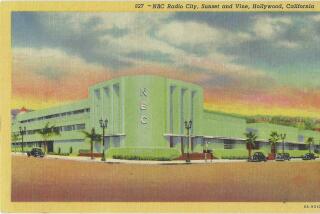Local Globe-Trotters : Television: KCAL’s 9 p.m. news is the only area broadcast to focus primarily on national and international issues.
- Share via
Last week, Pat Harvey was in Russia working on a story about sex and AIDS in the former Soviet Union. This week, David Jackson is in Somalia to report on the civil war, starvation and U.S. troop deployments.
News anchors at other stations have been known to traipse around the globe to tape special series for the ratings sweeps periods, but for the anchors of KCAL-TV Channel 9’s 9 p.m. news, it’s a regular part of their job.
The 9 p.m. news, the middle child in KCAL’s three-hour prime-time news block, is the only local broadcast in the Los Angeles-Orange County market that focuses primarily on national and international issues and events. And after a slow start over the first two years, it has begun to grab a sizable audience: Its rating soared 33% in last month’s November sweeps over the previous year, to about 200,000 households each night.
Bob Henry, KCAL’s news director, said that the presidential election and its aftermath clearly boosted the newscast’s numbers the past few months. But the election aside, Henry believes that while many local newscasts have become fixated on the quick and transient breaking local story--a shooting here, a fire there--the 9 p.m. news’s effort to tackle issues in far-off places via longer-form pieces and live debates has proved that L.A. news viewers are interested in more than just the latest accident on the 405.
Monday, for example, while nearly every newscast in town--including KCAL’s other broadcasts--led with extensive coverage of the local rainstorm, KCAL’s 9 p.m. newscast began with the situation in Somalia, “without apology,” said Kerry Oslund, Channel 9’s executive producer.
“I wouldn’t want to be the seventh station trying to out-headline, out-quick and out-brief the other stations,” Henry said. “We’re better off trying to be an alternative.”
“People want to know what is going on in their community, certainly. I know I do,” said Harvey, who anchors the program with Jackson. “But usually we can find a connection to California in all kinds of stories that are happening around the world. If something is happening in the global aerospace industry, that affects us here. People are interested in taxes and the economy and how Detroit reacted differently to the killing of a man by some police officers there. Even if someone watches and says, ‘Gee, I thought I had it bad. Look at those people,’ people are interested in what’s going on.”
This approach was born out of necessity when KCAL launched its prime-time newscasts in March, 1990. The 8 p.m. newscast focuses on local and state news while the 10 p.m. broadcast touches on the top stories of the day, which usually means local, immediate stories. KCAL, Henry said, decided to use the middle hour to experiment--both with content, format and a new-to-this-market anchor team--so that viewers could watch at least parts of two hours back to back without a great deal of repetition.
The 9 p.m. news also borrowed from successful national programs to provide a more lengthy discussion of topical issues. Like “Nightline,” the newscast frequently includes a debate between at least two experts on some issue--how to handle the situation in Bosnia or Somalia, for example, or whether the new economic indicators will cause President-elect Clinton to alter any of his economic plans and promises, or what should be done about Cincinnati Reds owner Marge Schott.
The newscast often spends up to 10 minutes interviewing a newsmaker. It offers a nightly business report on both economic success stories and failures. Even the weather segment gives temperatures from around the country “so that people can see how their cousins and aunts are faring back in Minnesota,” Oslund said.
And like Larry King and talk radio, the show regularly asks viewers to call in to vent their opinions on the day’s hot topic.
“A lot of these things started out of desperation,” Oslund said. “When we started, we didn’t have the huge network of stations and friends around the country to give us videotape that we have now, so we had to say, ‘What will we do with this hour of television?’ Well, one way is to open the phones and listen to what people have to say. And as things worked, we kept them in.”
The newscast has worked even though both Harvey and Jackson were unknown when they arrived here. Last month, the program even exceeded the rating of the station’s 8 p.m. newscast and far surpassed that of the 10 p.m. show, both of which are anchored by veteran L.A. news anchor Jerry Dunphy.
“What I hear from people is that we don’t just give them the story and that’s the end of it,” Harvey said. “It’s not just, ‘Can we shoot this dead body better than the other stations?’ On most major stories, we’ll come back to it in the same broadcast. We’ll interview somebody or have a debate or look at it from another angle.”
Big disasters over the past two years have helped, Harvey said. The war with Iraq, the floods last winter, the riots and the earthquakes sent people in search of information and some of them discovered that KCAL and the 9 p.m. news existed. Some decided to make it a habit, she said.
Oslund and Harvey are confident that the audience will continue to grow. Henry is more cautious about predicting the future, but he said that the 9 p.m. start--when there is no other news competition and entertainment-seeking young children are off to bed--works in the broadcast’s favor.
More to Read
The biggest entertainment stories
Get our big stories about Hollywood, film, television, music, arts, culture and more right in your inbox as soon as they publish.
You may occasionally receive promotional content from the Los Angeles Times.










